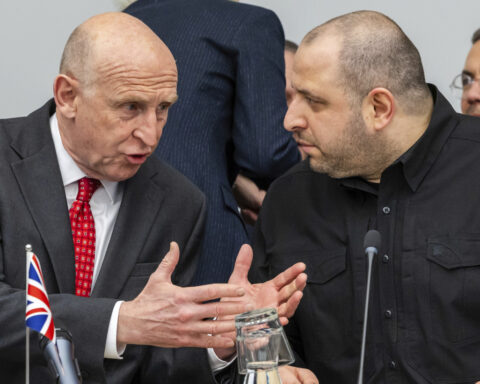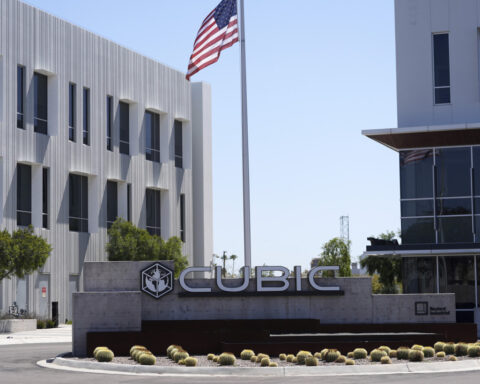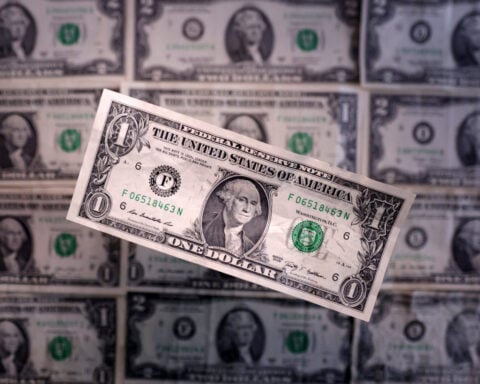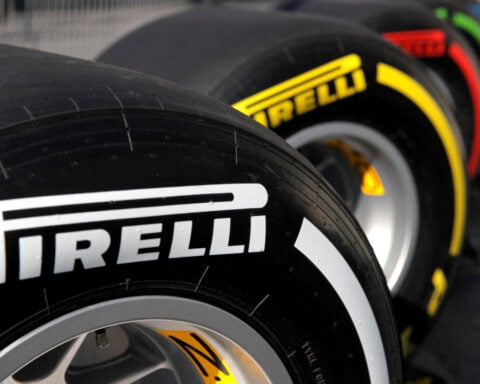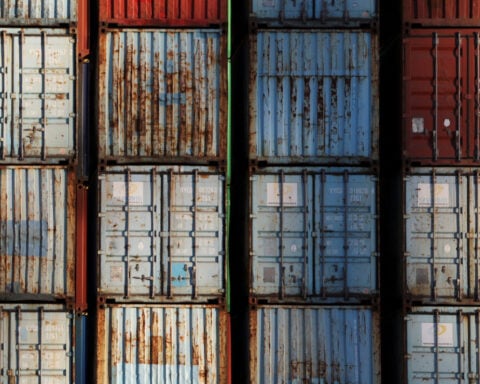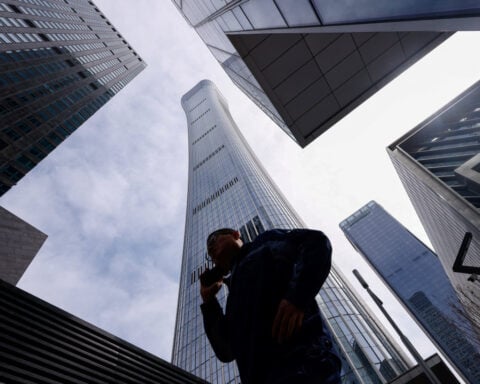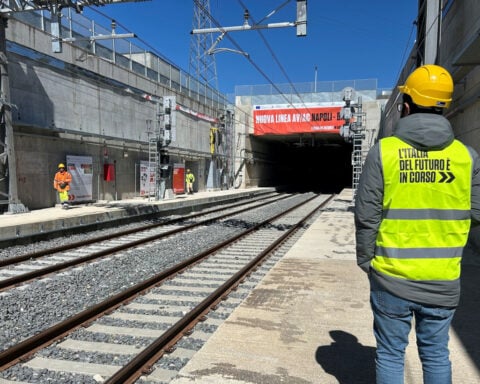New York (CNN) — Former President Donald Trump on Tuesday was interviewed by Bloomberg at the Economic Club of Chicago, where he once again touted historic tariffs as a way to grow America’s manufacturing sector by making foreign countries foot the bill.
But, given the economy’s central importance in the 2024 race, it’s worth hammering on an Econ 101 fact: Tariffs are a tax on Americans.
If you’re rolling your eyes right now because you already know this, congratulations and feel free to scroll on. Trouble is, a lot of people don’t seem to get this — including Trump, who, CNN has reported, has falsely and repeatedly claimed that China would pay for tariffs he imposes.
It’s just not how trade works — not now, not ever.
Very simply: When the US government decides to put a tariff (read: tax) on, say, Chinese goods, the actual money going to the US Treasury comes from the American company doing the importing. And for that company to stay in business, it needs to make up that cost somewhere else, and that typically means raising prices on its consumers. Check out this handy chart from my colleagues Annette Choi and Katie Lobosco:
TL;DR: All roads point to the same outcome, where customers pay more.
This week, a widely shared TikTok video underscored how the political messaging around tariffs has become detached from reality. In it, podcaster Sean Kelly interviews progressive commentator David Pakman about Trump’s policies. Kelly, to his credit, candidly admits that he’s confused.
“Wait, so China’s not paying tariffs right now?” Kelly says.
After Pakman explains the way tariffs harm American companies, Kelly seems befuddled. “I genuinely had no idea, I thought China was paying those … Why would he do that?”
Economists from the right and the left are asking the same thing.
But Trump is doubling down.
At the Economic Club of Chicago Tuesday, he refused to accept that his across-the-board tariffs would increase costs for everyday goods.
“To me, the most beautiful word in the dictionary is tariff,” Trump said at one point. When pressed by Bloomberg News Editor-in-Chief John Micklethwait on the negative effects, Trump again stated, inexplicably, that the policies would protect “the companies that we have here and the new companies that will move in.”
As Micklethwait noted, it’s “just simple mathematics:” We import $3 trillion worth of goods every year, and we enjoy relatively cheap prices on a variety of items thanks to free trade. Adding tariffs on all of them forces prices up, sending inflation higher.
That’s not some obscure academic theory — we have the past seven-plus years to show it. After Trump imposed tariffs on Chinese goods, President Joe Biden and Vice President Kamala Harris kept those tariffs in place and even expanded tariffs on semiconductors, electric vehicles and other products in an effort to bolster manufacturing and clean energy on US soil.
American consumers have already borne almost the entire cost of those tariffs on Chinese products, according to study after study.
But it’s important to judge Trump’s first-term trade policies and the Biden-Harris approach against context of the unprecedented tariff wave Trump is planning if he gets to Round Two.
The Republican nominee has embraced tariffs as a catch-all for his economic policy agenda, vowing to significantly increase the tariffs the US has on imports from all over the world. As Katie Lobosco writes: In addition to the restrictions on China, Trump is eyeing new tariffs of up to 20% on every foreign import coming into the US. Trump has also called for adding another tariff upward of 60% on all Chinese imports and said he would impose a “100% tariff” on countries that shift away from using the US dollar.
That’s where mainstream economists say he’s lost the plot.
“Economists are OK with tariffs in certain contexts — national security, for example,” said Scott Lincicome, the vice president of general economics at the Cato Institute, on The Atlantic’s Good on Paper podcast. “There’s a legitimate case that the United States — I’d say, a strong case the United States — shouldn’t be buying its tanks and planes and laser-guided missiles from China, that tariffs can serve a role there.”
But, Lincicome, notes, economists dislike tariffs primarily because they’re expensive — an inefficient, unfair tax on poorer people who spend more of their income on imported goods. The nonpartisan, independent Peterson Institute for International Economics estimated the added cost for a typical middle-income household at more than $2,600 a year.
And Trump’s tariffs — combined with his plans to deport immigrants and hijack interest rate decisions from the Federal Reserve — would cause inflation to spike, growth to slow and lower employment, according research from the Peterson Institute.
Harris, for her part, has derided tariffs as a “sales tax on the American people” but hasn’t detailed whether she would extend the trade restrictions put in place by her predecessors.
Bottom line: Tariffs might be a beautiful word to Trump’s ear, but he’s telling a fictional story about what they do in practice. Prices go up and America’s trading partners retaliate.
“It’s a 2-year-old’s mentality,” David Kelly, chief global strategist at JPMorgan Asset Management, told my colleague Matt Egan. “You punch someone in the nose and expect them not to punch you back.”
The-CNN-Wire
™ & © 2024 Cable News Network, Inc., a Warner Bros. Discovery Company. All rights reserved.

 Trump has begun another trade war. Here's a timeline of how we got here
Trump has begun another trade war. Here's a timeline of how we got here
 Canada's leader laments lost friendship with US in town that sheltered stranded Americans after 9/11
Canada's leader laments lost friendship with US in town that sheltered stranded Americans after 9/11
 Chinese EV giant BYD's fourth-quarter profit leaps 73%
Chinese EV giant BYD's fourth-quarter profit leaps 73%
 You're an American in another land? Prepare to talk about the why and how of Trump 2.0
You're an American in another land? Prepare to talk about the why and how of Trump 2.0
 Chalk talk: Star power, top teams and No. 5 seeds headline the women's March Madness Sweet 16
Chalk talk: Star power, top teams and No. 5 seeds headline the women's March Madness Sweet 16
 Purdue returns to Sweet 16 with 76-62 win over McNeese in March Madness
Purdue returns to Sweet 16 with 76-62 win over McNeese in March Madness
